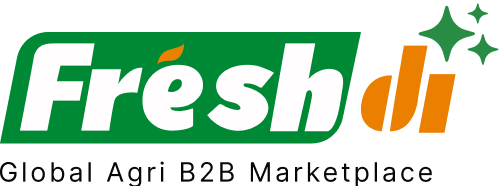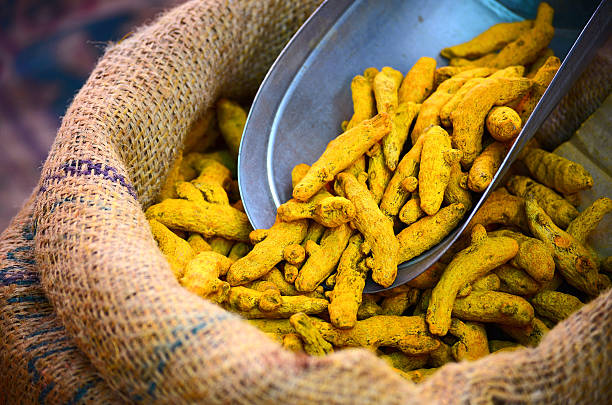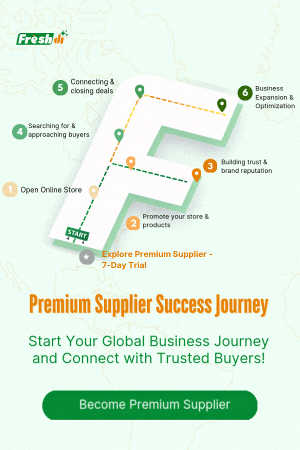Introduction – Current State of Play: The Turmeric Sector in China
If you’re sourcing turmeric from China in 2025, now’s the time to stay alert. The market is on a wild ride, and it’s all thanks to a mix of global disruptions, climate chaos, shifting trade policies, and skyrocketing demand. Whether you’re managing procurement for a nutraceutical brand or supplying raw turmeric for food products, the current changes are too big to ignore.
Let’s start with the supply chain. Global disruptions—stemming from delayed shipments, port congestion, and erratic weather—are tightening the availability of turmeric. India, the world’s largest turmeric producer, is grappling with floods and droughts that have reduced harvests. With fewer exports coming out of India, prices are spiking. This directly impacts China, which still depends heavily on imported turmeric to meet its growing consumer demand.
Meanwhile, a recent trade breakthrough is shaking things up. In May 2025, China and the U.S. agreed to lower mutual tariffs—China’s turmeric-related import tariffs from the U.S. dropped from 125% to 10%. This 90-day truce is a golden window for buyers to explore new sourcing opportunities.
And let’s not forget the demand side. Chinese consumers are increasingly health-savvy. From skincare to superfoods, turmeric is hot. Local manufacturers are scrambling to meet this spike in demand, pushing many to seek verified, agile suppliers.
Platforms like Freshdi are stepping in to help. With real-time RFQ trends, verified supplier profiles, and market updates, Freshdi makes it easier than ever to stay informed and source smartly.
Deep Dive – What’s Making Headlines? Key Recent News & Impacts
While the turmeric buzz in China is relatively quiet in terms of flashy headlines, the underlying trends are loud and clear.
-
Climate Impact on India: The weather in India not only affects local crops but also ripples across the Chinese market. The drop in Indian turmeric stock from 1.2 million to 500,000 bags has created a supply void.
-
Price Surge: Turmeric prices have soared to nearly USD 1.92 per kg in India. This increase is being felt in Chinese wholesale markets and is pushing buyers to lock in contracts fast.
-
Policy Shift: The recent tariff truce between the U.S. and China has sent procurement teams back to the drawing board. With lower tariffs, U.S.-origin turmeric is more competitive, possibly reshuffling supplier preferences.
-
Consumer Trends: Turmeric is no longer just a spice—it’s a wellness staple. From turmeric lattes to skincare soaps, the product range is expanding, and so is the need for specialized supply chains.
In such a fast-moving landscape, agility is everything. Smart sourcing platforms like Freshdi help businesses react quickly by providing supplier credibility checks, product traceability, and market pulse analytics.
Top 10 Verified Turmeric Suppliers in China – Adapting to Today’s Market
When it comes to turmeric suppliers in China, quality, reliability, and market responsiveness are key. These top 10 suppliers have been vetted based on Freshdi user feedback, export readiness, certifications, and adaptability to 2025’s ever-changing market.
-
Yulin Tongjin Trading Co., Ltd.
Known for their high-grade organic turmeric fingers, they offer consistent quality and robust export capabilities. -
Zhenyibio Technology Inc.
Specializing in turmeric powder with strong anti-inflammatory properties, ideal for pharmaceuticals and supplements. -
Aurora Industry Co., Ltd.
Focused on curcumin-rich extracts, Aurora is a go-to for buyers in cosmetics and nutraceutical industries. -
Shanxi Meila Bio-Tech Co., Ltd.
A leader in turmeric-based skincare soap, responding to China’s booming natural cosmetics market. -
Sichuan Eastern Morning Biological Technology Co., Ltd.
Innovators in turmeric-infused functional foods, including low-carb, keto-friendly konjac rice. -
Fujian Tuotian Biotechnology Co., Ltd.
Known for turmeric beverage powders that combine convenience with health benefits. -
Jiangsu Senyu Bio-Tech Co., Ltd.
Offers pharmaceutical-grade turmeric extracts with high bioavailability, ideal for supplement brands. -
Guangdong Xinle Natural Ingredients Co., Ltd.
Specializes in turmeric oleoresin and essential oils for food flavoring and aromatherapy. -
Anhui Qiangwang Flavouring Food Co., Ltd.
Supplies turmeric seasoning blends tailored for the processed food industry. -
Beijing Smart Herb BioTech Co., Ltd.
Offers customized turmeric formulations for international clients across North America and Europe.
Dynamic Ranking Note:
Freshdi regularly updates its “Suppliers of the Month/Quarter” list based on real-time performance data, RFQ volume, and buyer feedback. Stay informed to discover rising stars in the turmeric supply chain.
Market Navigation – Strategic Responses to The Current Turmeric Landscape in China
Let’s face it—2025 is not a year for passive sourcing. If you’re importing or distributing turmeric in China, these trends demand action:
-
Price Risk Management: With steep price hikes due to tight supply, long-term contracts or diversified sourcing (e.g., including U.S. or Southeast Asia) may reduce exposure.
-
Product Prioritization: Focus on high-margin turmeric products—think curcumin extracts or ready-to-drink turmeric beverages—where you can pass on a portion of the cost to value-driven consumers.
-
Agility in Trade Routes: Leverage the 90-day U.S.-China tariff truce. It may offer a temporary cost advantage for buyers open to sourcing from U.S. suppliers or collaborating with Chinese importers of U.S. turmeric.
-
Sustainability and Traceability: Buyers are increasingly demanding transparency. Work with suppliers that offer traceability features—Freshdi flags such suppliers on its platform for easier identification.
-
Regional Sourcing Within China: While most turmeric is still imported, localized processing and packaging hubs in Guangdong, Sichuan, and Fujian are emerging. These areas may offer more stable logistics and faster delivery.
Conclusion – Key Takeaways for Businesses in a Dynamic Market
The Chinese turmeric market in 2025 is as golden as the spice itself—but only for those who can keep up with the changes. Between price surges, climate-driven crop failures, and geopolitical shifts, the landscape is changing fast.
Here’s what you need to remember:
- Stay Informed: Prices, trade policies, and supply routes are in flux. Don’t rely on last month’s data.
- Adapt Quickly: Whether it’s rerouting your supply chain or switching from raw turmeric to extracts, adaptability equals resilience.
- Choose Wisely: Verified suppliers on platforms like Freshdi offer more than just products—they offer reliability, traceability, and insight.
- Think Ahead: With demand growing and supply tightening, locking in your procurement strategy now could save you later.
Quick Buyer’s Checklist – 2025 Turmeric Edition
- ✅ Have you reviewed your current supplier’s stock levels and pricing?
- ✅ Are you monitoring RFQ trends and price movements through Freshdi?
- ✅ Did you explore new suppliers benefiting from the recent U.S.-China tariff shift?
- ✅ Are you sourcing turmeric products with higher margins (extracts, beverages)?
- ✅ Have you verified your supplier’s sustainability and quality certifications?
Future Outlook
Looking ahead, turmeric’s role in China will only grow. With increasing application in foods, beverages, and health products, the demand isn’t going anywhere. But supply risks won’t disappear either. Buyers who integrate real-time data, flexible sourcing strategies, and vetted partnerships into their operations will thrive.
Platforms like Freshdi are leading this evolution—empowering buyers with insights, dynamic supplier rankings, and a seamless sourcing experience tailored for a volatile world.
FAQs
Q1: Why are turmeric prices rising in China right now?
A1: Prices are surging due to lower production in India caused by climate events, coupled with high global demand and supply chain disruptions.
Q2: What turmeric product types are most profitable in 2025?
A2: Curcumin extracts, turmeric-based beverages, and skincare products offer higher margins and are in growing demand.
Q3: How does the U.S.-China tariff truce impact turmeric imports?
A3: The temporary reduction in tariffs makes U.S.-origin turmeric more affordable for Chinese importers during the 90-day agreement window.
Q4: Where can I find verified turmeric suppliers in China?
A4: Platforms like Freshdi offer verified supplier listings, buyer feedback, and real-time RFQ trends.
Q5: What regions in China are emerging for turmeric processing?
A5: Guangdong, Sichuan, and Fujian provinces are becoming hubs for turmeric product manufacturing and distribution.
References
- EssFeed – Global Supply Chain Disruptions
- MajesticSpice – U.S.-China Tariff Truce
- 6Wresearch – China Turmeric Market Report
- ASN Agro Foods – India Turmeric Price Surge


